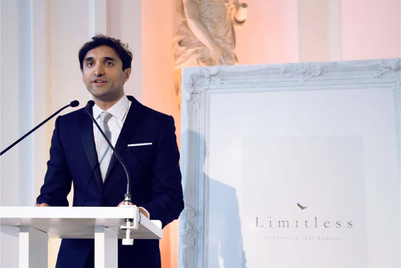
When I'm talking about innovative uses of tech or the "metaverse", I always use the Travis Scott in Fortnite experience as the best example. This is usually met with "I've seen that one, what's happened since?" and the answer is not a lot. Nothing better.
So why are we still referencing something that happened two years ago? To understand that we need to go back a few steps. A year ago, people rolled their eyes at the term "metaverse" in our industry. Next thing, Facebook made a land grab and rebranded to "Meta" –telling the world that "the metaverse" is happening, and they're the big player.
Next came the brand and agency mayhem as everyone rushed to create something in the "metaverse" and be "the first". And this is exactly where the problem lies.
The truth is there is no metaverse yet. We have: gaming (like Fortnite or Animal Crossing), platforms for building immersive social spaces (like Roblox and Decentraland) and technologies like AR, VR and the blockchain. We are nowhere near a shared virtual space with interconnected destinations and experiences. Currently what we have are lots of siloed experiences that don't interact with each other, with little or no interoperation between them.
What we do also have, though, are rich areas to play in and exciting technologies to use in order to do so. And while not every experience can be as successful as Travis Scott's Astronomical, there are lessons and key ingredients that we can take from it.
What can we learn from Travis Scott in Fortnite?
No tech for tech's sake
The first rule for brands is don't create something in AR, just to create something in AR. Use it because it's truly going to elevate an experience. Fortnite didn't create Astronomica lto to "make something in the metaverse", it saw a genuine opportunity to innovate by taking in-game events to a new level.
Elevate not replicate
Fortnite and Travis Scott completely reimagined what a gig is. They didn't just build "the stage" as we know it, in a game. They turned the whole island into a stage. They rewrote the formula and broke the format. Travis Scott was a giant, everything was on fire, and when he played Highest in the Room, I was underwater. Fornite completely rewrote how you can experience a concert.
Build worlds and tell stories
Lots of the experiences we've seen recently have the tech but don't have the storytelling. Brands should be collaborating with creatives who are able to bring narratives into these new contexts in a fresh way. One of the best things about these new technologies is that they give us the opportunity to bring our brands to life by building worlds around them. Travis Scott's music and visual brand is colourful, multi-sensory and incredibly dynamic. People describe his music as like being on an acid trip and Fortnite brought this to life. Alo Yoga also did a beautiful job of this in Roblox recently, introducing young people to mindfulness through a considered and engaging world.
Tech, within your means
Fortnite knew its platform and its limits and it had enough cash to make a visually stunning experience. But many "metaverse" brand experiences we've seen since look more like the first iteration of the internet than the next iteration. If you don't have enough cash or the right partner to build something amazing, don't do it.
The perfect partnerships
It's crucial that brands choose partnerships and talent that feel authentic to their brand. Fortnite and Travis Scott made sense. Another example of this working well is Lego x Unreal collab to create a safe space for kids to play in gaming, which is an example of a brand turning up with purpose and authenticity.
Go to where your audience is
Most of the time, brands are trying to target a specific audience but there's lots of lazy marketing like "Gen Z love TikTok". It's key that you do some work to understand what platforms your target audience are using and most importantly, how they're using it. Spotify's recent experience is a good example of this – it knew its brand has less loyalty from Gen Z than from millennials because Gen Z have grown up with so many platforms where they can consume on-demand content for free. So they targeted them in Roblox with an interactive game – which has had brilliant results.
Rosie Copland-Mann is senior creative strategist at Amplify


.jpg&h=334&w=500&q=100&v=20250320&c=1)

.jpg&h=334&w=500&q=100&v=20250320&c=1)

.jpg&h=334&w=500&q=100&v=20250320&c=1)

.jpeg&h=334&w=500&q=100&v=20250320&c=1)


.jpg&h=334&w=500&q=100&v=20250320&c=1)
.jpeg&h=268&w=401&q=100&v=20250320&c=1)






.jpg&h=268&w=401&q=100&v=20250320&c=1)